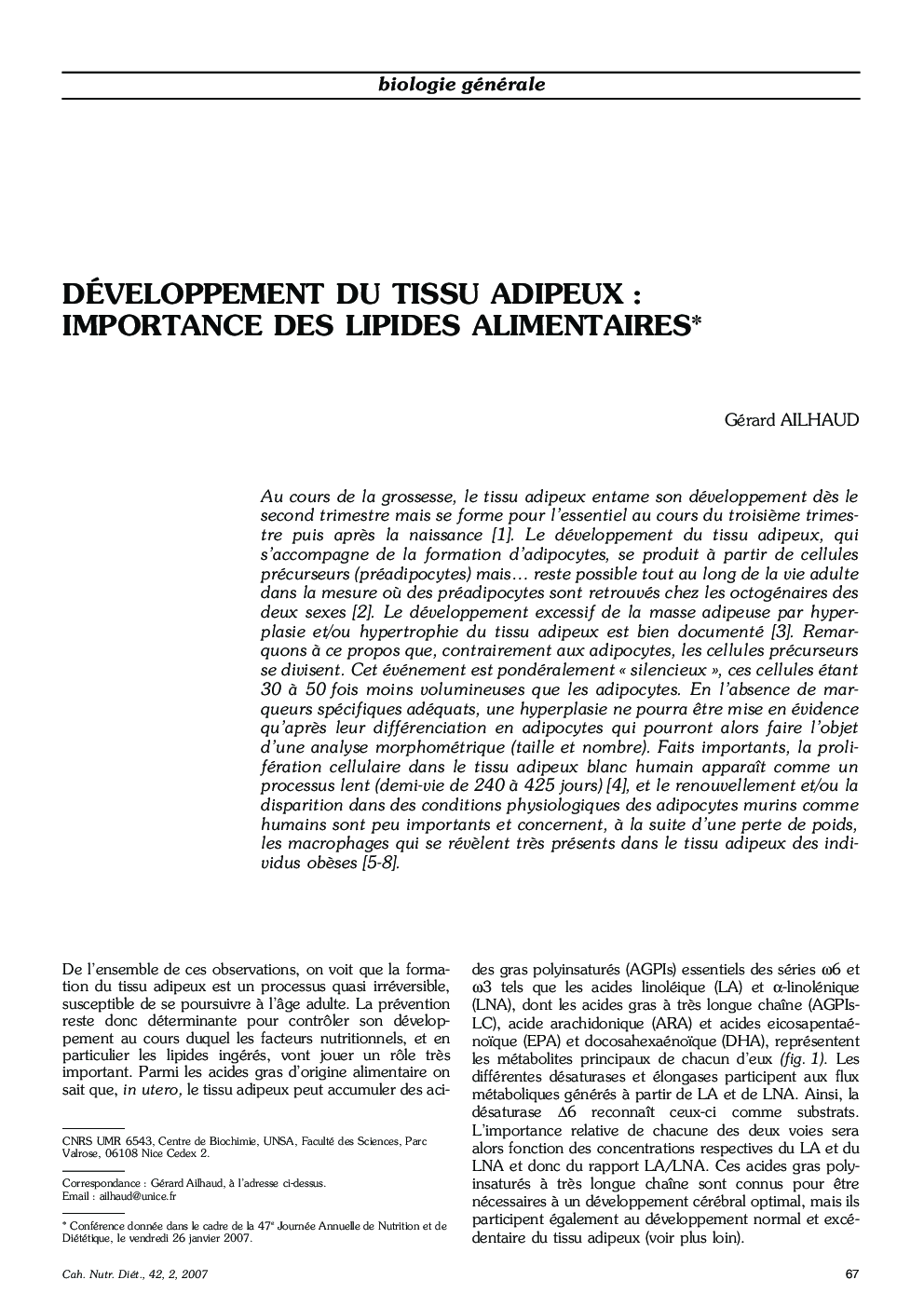| کد مقاله | کد نشریه | سال انتشار | مقاله انگلیسی | نسخه تمام متن |
|---|---|---|---|---|
| 2679534 | 1142212 | 2007 | 6 صفحه PDF | دانلود رایگان |
عنوان انگلیسی مقاله ISI
Développement du tissu adipeux : importance des lipides alimentaires1
دانلود مقاله + سفارش ترجمه
دانلود مقاله ISI انگلیسی
رایگان برای ایرانیان
کلمات کلیدی
موضوعات مرتبط
علوم پزشکی و سلامت
پزشکی و دندانپزشکی
غدد درون ریز، دیابت و متابولیسم
پیش نمایش صفحه اول مقاله

چکیده انگلیسی
In animals and humans, both cross-sectional and longitudinal studies have shown that a caloric excess, i.e. fat-enriched foods in most cases, is associated to enhanced fat mass. The role of dietary fat as a major player in adult human obesity remains controversial because the prevalence of overweight and obesity has increased dramatically over the last decades despite no recent major change in the amount of ingested fats. However the importance of qualitative changes in the fatty acid composition of fats has been largely disregarded despite a dramatic alteration over decades of the balance of essential polyunsaturated fatty acids (PUFAs). There is evidence from animal and human studies that changes in the balance of Ï6 and Ï3 PUFAs may alter the early stages of adipose tissue development. Under isonenergetic conditions, pups from wild-type mother mice fed a linoleic acid (LA)-enriched diet were 40% heavier 1 week after weaning than those from mothers fed a LA/α-linolinenic acid (LA/LNA) diet, and the weight difference is maintained at the adult age. The LA-induced enhancement of fat mass is abolished in mice invalidated for the cell surface prostacyclin receptor (ip -/- mice), demonstrating the critical role of arachidonic acid and prostacyclin in excessive adipose tissue development. Changes observed in the past decades in the fatty acid composition of dietary fats observed in breast milk and formula milk, i.e. an increase in LA with slight or no change in LNA content, acting in concert with a positive energy balance, may be responsible at least in part for the dramatic rise in the prevalence of childhood overweight and obesity. The significant change in the composition of PUFAs in most consumed foods can be traced to changes in human food habits but, quite importantly, also in the feeding pattern of breeding stock. Since prevention of obesity appears critical to avoid difficult if not insurmountable health problems in the future, and in addition to a better control of energy balance, the composition of dietary lipids should be reconsidered from the very beginning of the food chain.
ناشر
Database: Elsevier - ScienceDirect (ساینس دایرکت)
Journal: Cahiers de Nutrition et de Diététique - Volume 42, Issue 2, April 2007, Pages 67-72
Journal: Cahiers de Nutrition et de Diététique - Volume 42, Issue 2, April 2007, Pages 67-72
نویسندگان
Gérard Ailhaud,